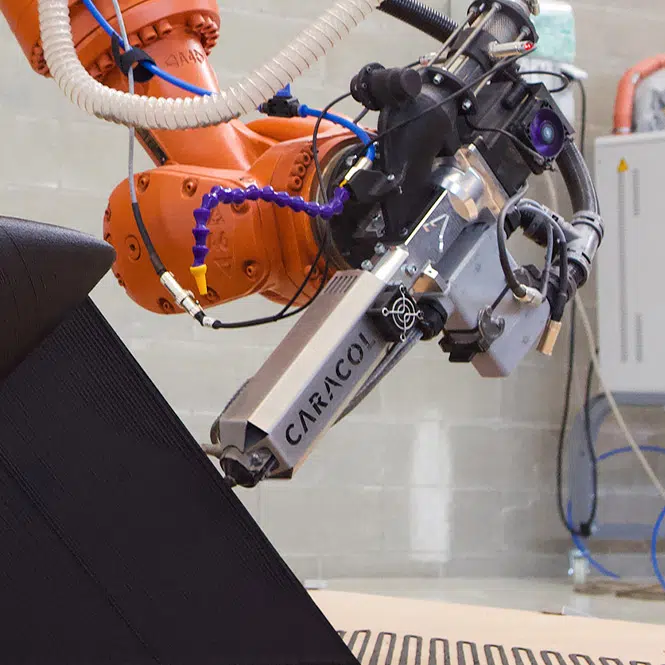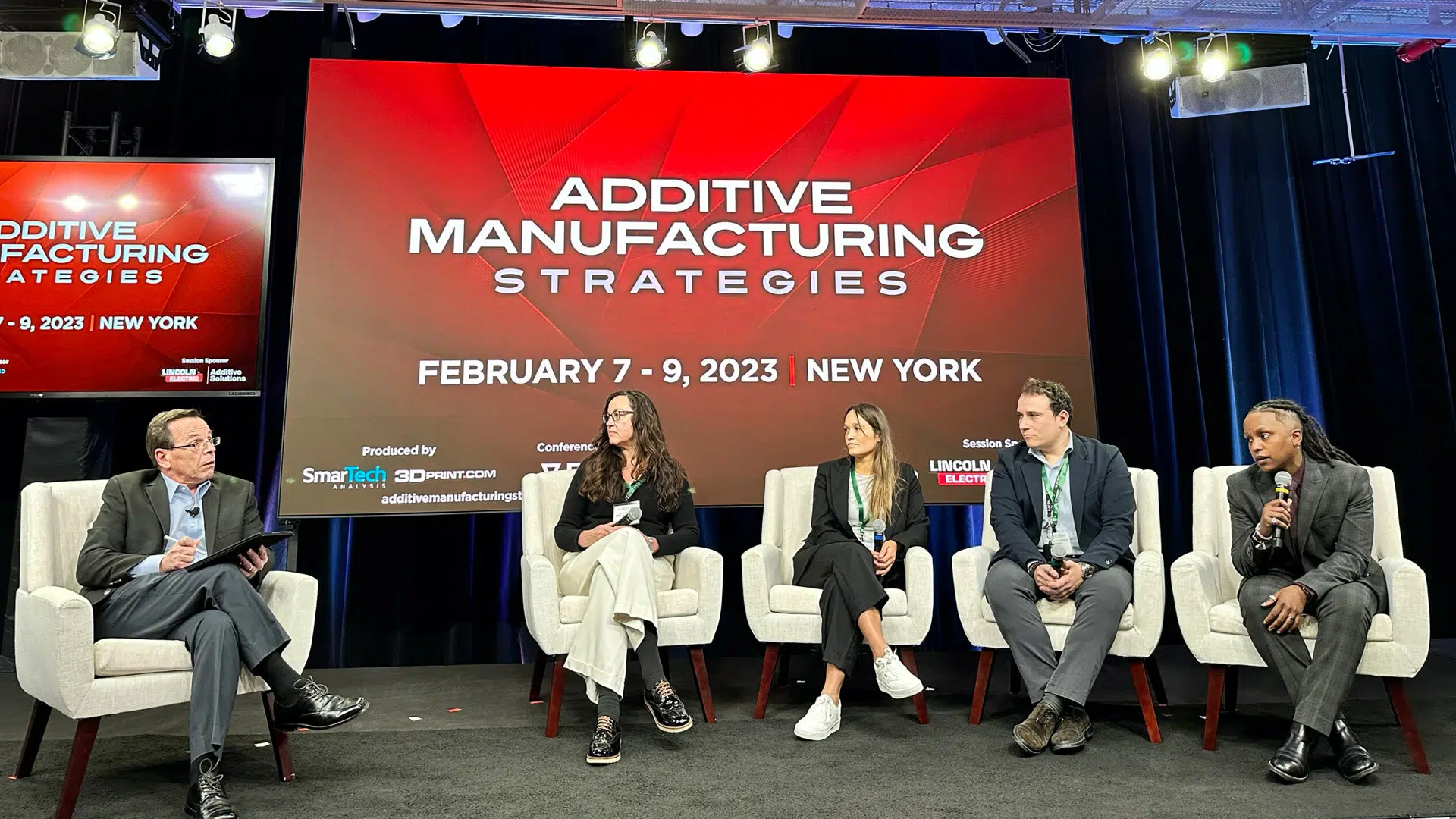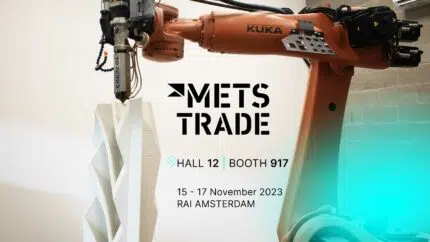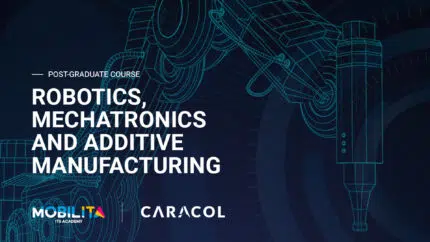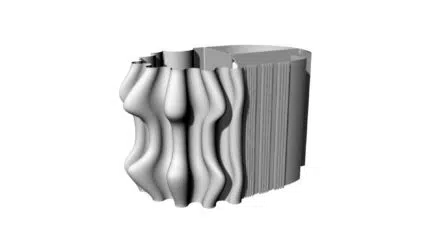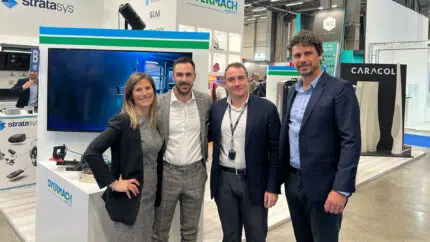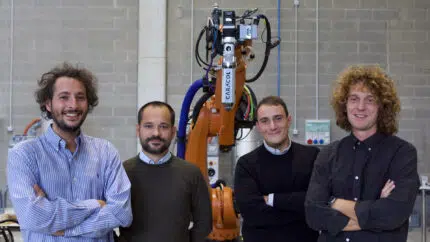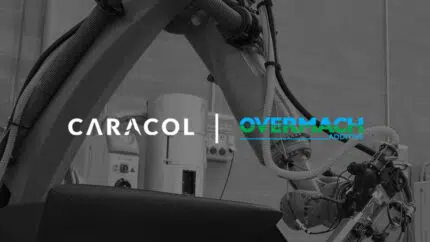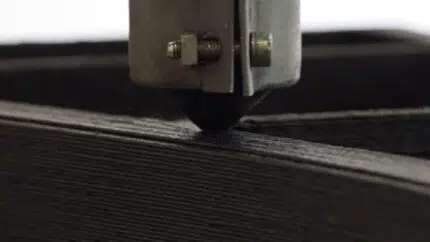
The yearly conference of Additive Manufacturing Strategies is always a great way to start the year reflecting on the state of the 3D printing sector. The event brings together global industry leaders to share thoughts, insights, innovations. Our CEO Francesco De Stefano was glad to share Caracol’s perspective and market learnings that are leading to the rise of large format technologies, in the panel “The Growing Role of Large-Format Machines”.
Given the strong growth of Large Format technologies this year’s vertical focus on LFAM explored different aspects of this market segment – drifting from metal solutions such as WAAM and DED, to a broader outlook on the developments around composites and polymers extrusion, as well as on technology developed for construction. “The Growing Role of Large-Format Machines” panel, moderated by Todd Grimm – President of T. A. Grimm & Associates, brought together the perspectives of market leaders in the LFAM segment, our CEO Francesco De Stefano, joined the discussion together with Charléne van Wingerden – CCO at CEAD Group, SJ Jones – Technical Sales Engineer at Velo3D, and Nanci Hardwick – CEO at MELD Manufacturing Corporation.
Overall, the past year has seen a consolidating consensus on the potential of LFAM technologies, and experts in the panel pointed to two key factors: technical growth of the technologies and commercial interest. The first aspect is connected to how the very new large-scale processes have been in development for the past five to ten years. As all groundbreaking innovations, especially in additive manufacturing, the experience matured with customers on projects and with years of R&D focus had helped companies reach technological maturity with their systems – as demonstrated by the performance of these systems on advanced applications, leading to the ability to industrialize and standardize processes. Combining this first aspect with the work done to provide these technologies as a solution to real-life manufacturing problems, has led to a rising awareness on the potential benefits of LFAM in terms of lead time, efficiency, parts consolidation, geometric freedom, and, most of all, costs.
The growing adoption of LFAM meets consensus at AM
While initially there was some skepticism due to the high investment needed for the technologies that first were presented on the market (i.e., gantry systems), the work conducted by companies together with universities and research centers with more adaptable robotic movement supports, and by the first adventuring customers on applications, proved the effectiveness of these technologies, generating hype for others to join the development. This response led companies like Caracol and CEAD to continue working on the flexible robotic large format solutions, a more scalable and affordable technology that immediately garnered interest on the client side.
The industries that appear to be responding with greater enthusiasm to LFAM technologies, from composite to metals, are spearheaded by the aerospace and marine sectors. The desire to increase efficiency and compared to traditional fabrication methods, have greater geometric flexibility, reduce the quantity of material used and the overall weight of parts, up to improving the performance of components also by substituting materials with composites or polymers is seen as an opportunity by companies in these sectors to overall impact their bottom-lines. Within the aerospace industry LFAM seems to have consolidated its role in manufacturing of tools, jigs, fixtures, and applications that substitute pure CNC milling, moving to production of finished parts. The ability of manufacture with high percentage of composite glass or carbon fibers has also allowed to work on metal replacement for certain finished superstructures and parts, as well as to substitute molding and extensively manual lamination processes to go direct to finished parts for hulls, pools and baths, and other applications. Overall, the freedom of design that the 6-axes provide is an excellent way to design and prototype large prototypes and pre-series for testing, casing applications, and reducing assemblies.
A challenge all the players mentioned is that there is no direct transferal of know-how from traditional 3D printing technologies to LFAM – rules for DfAM, constrains, materials behaviors, all change once the parts extend beyond the meter. To extend adoption of these solutions, leading companies in LFAM are excited to join forces to collaboratively define the standards and best practices across the market segment, putting all the valuable information learned in years of work on hardware, software, and materials to the service of customers.
As all panelists mentioned, a key aspect to be mindful of for clients interested in LFAM, is to ensure the company they are buying their equipment from provides the needed support in accompanying them towards internalizing the technology. This means going beyond traditional customer service, helping clients understand the infrastructural undertakings that installing such solutions in their production space is, providing engineering and DfAM support on applications, identifying which parts and components could benefit from LFAM, and trouble-shooting issues together. Find a partner who can walk beside you, or it will be very tough on your own.
